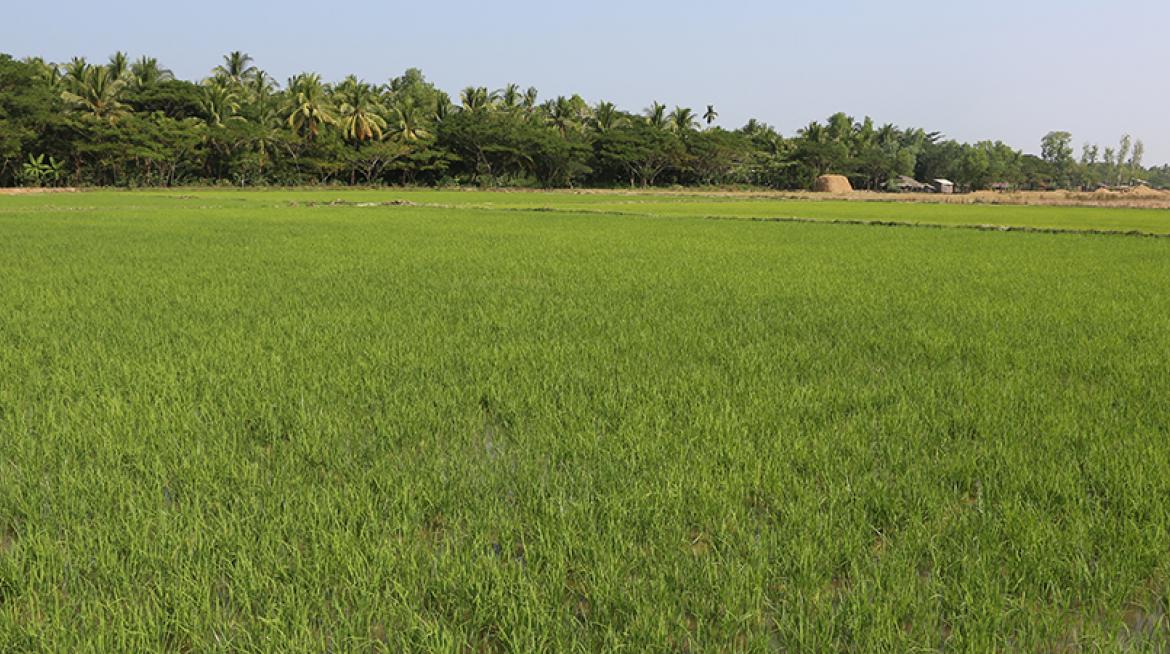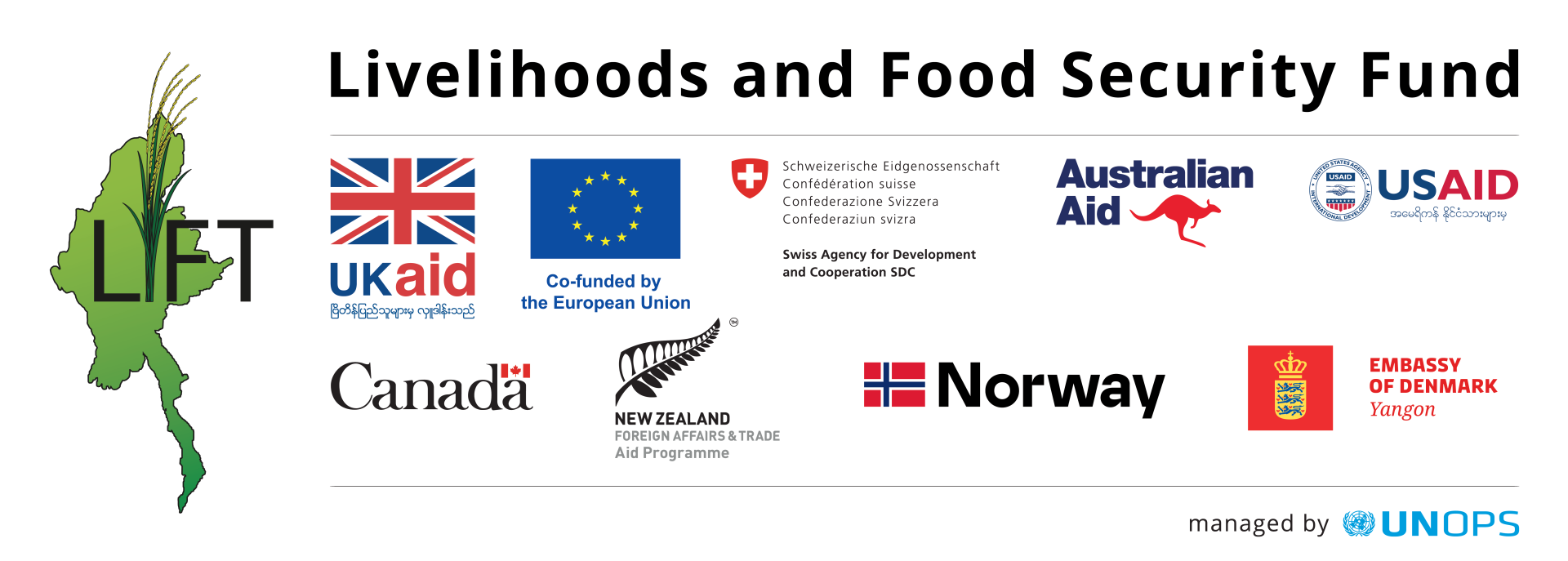
Over the past three years, LIFT has funded the International Rice Research Institute (IRRI) in Myanmar to work with government to define resilient, high yielding rice varieties that adapt well to local conditions. The research has clearly paid dividends, seen in the performance of selected rice varieties in the recent floods.
--------------------------------------------------
Just four days after the Cyclone Komen floods receded, U Hla Win took fellow farmers U Hla Than Win and U Phyu Lone out into his Minbya paddy field to show them the resilience of his Sin Thwe Latt seedlings.
Sin Thwe Latt is a salt tolerant, flood resilient, high yielding variety of paddy seed developed by Yezin, Myanmar’s Department of Agricultural Research. Fourteen days after being transplanted, these seedlings have survived ten days of ravaging rain, waist deep flooding and silt mud in the aftermath of Cyclone Komen.
Developed as a hybrid seed from a paddy plant imported from the Philippines by IRRI, and a locally grown paddy variety, Sin Thwe Latt has a strong, long tap root and secondary roots that stretch beneath the surface of the ground. So, seedlings are well secured to the earth, and able to survive flooding within 14 days of planting.
U Hla Win is amazed his seedlings have survived. “I am so happy my plants survived ten days under water. Our traditional seeds are not so strong in the ground. They are not resilient to the floods and get washed away.”
Addressing food security in vulnerable Rakhine State communities, the LIFT-funded Tat Lan development programme is encouraging farmers to experiment with different varieties of paddy and new ways of sewing their seeds to increase the yield.
 At Farmer Field Schools, U Hla Win and his colleagues learnt to plant systematically rather than broadcasting their seeds. The new methods are labour intensive, but will potentially increase yields from 80 baskets per acre to 140 baskets per acre.
At Farmer Field Schools, U Hla Win and his colleagues learnt to plant systematically rather than broadcasting their seeds. The new methods are labour intensive, but will potentially increase yields from 80 baskets per acre to 140 baskets per acre.
It took U Hla Win eight days to prepare the seed bed on his one acre of land. First he germinated the new Sin Thwe Latt seed, then he ploughed his land with his buffalo for six days, before planting methodically in rows. After 25 days, the seedlings are ready for transplanting into fertilised soil and this takes another two days’ of labour.
“I used to broadcast my paddy seed. Now I transplant the seedlings in rows, so I can easily weed.” He says he has also learned to use fertiliser strategically, spreading it three times during the growth of the paddy.
“I believe this Sin Thwe Latt rice will give me a greater yield this year, than I have had in the past,” U Hla Win says, pleased that he can apply his knowledge and encourage other village farmers to follow his experiment.
Farmers, however, are universally conservative, and many have been reluctant to try new varieties of seed in case they do not thrive in their specific conditions.
Tat Lan senior agricultural advisor, Bo Thein Maw says surviving the floods was one thing, enduring the sun baked mud is causing more serious problems and even Sin Thwe Latt is stressed.
When the floods washed away they left thick mud on the surface of the ground. The plants might have tolerated the mud, he says, but “the sun was very hot after the cyclone and it baked the mud as hard concrete on the surface of the ground. Some plants have managed to live through the cracked surface but most of the plantations have been lost.”
In Minbya and Myebon, 26,162 acres of paddy land was destroyed. Last month, Tat Lan is distributed 1,600 baskets of fast maturing paddy seed for replanting. Dagon 2, another IRRI hybrid, and RD 41 paddy seed from Vietnam, will be ready for harvest in 110 days compared with the normal 142 day growth.
TheTat Lan Programme was developed and is funded by LIFT. The programme is implemented by a consortium of INGOs, including Save the Children, IRC, Oxfam, CARE International, and Better Life Organisation. Story by Jennifer MacIntyre, Tat Lan's Communications Officer.


